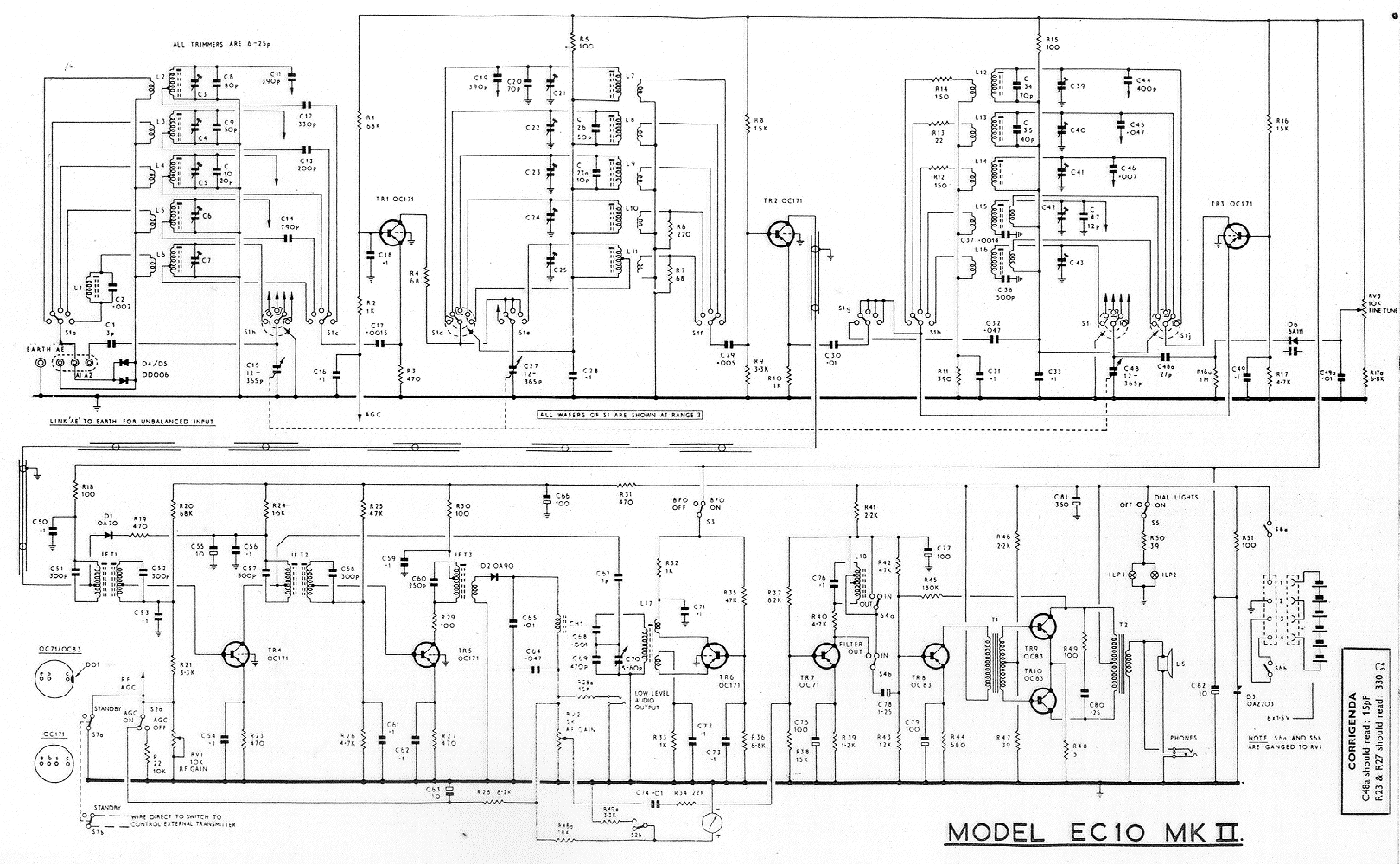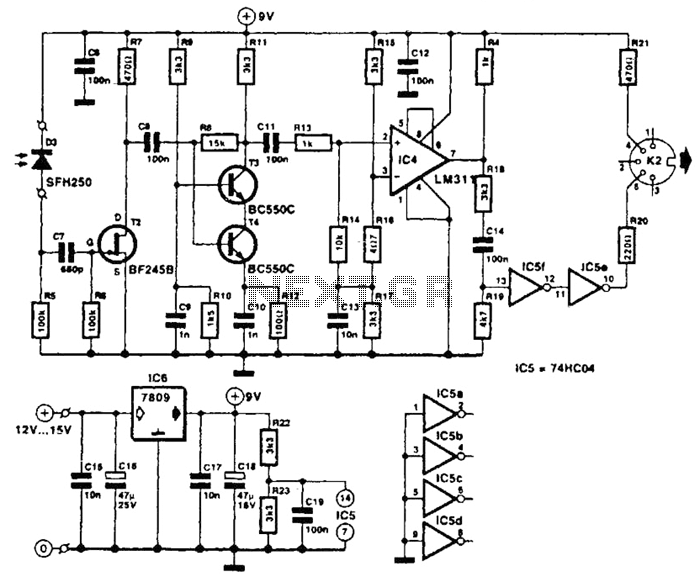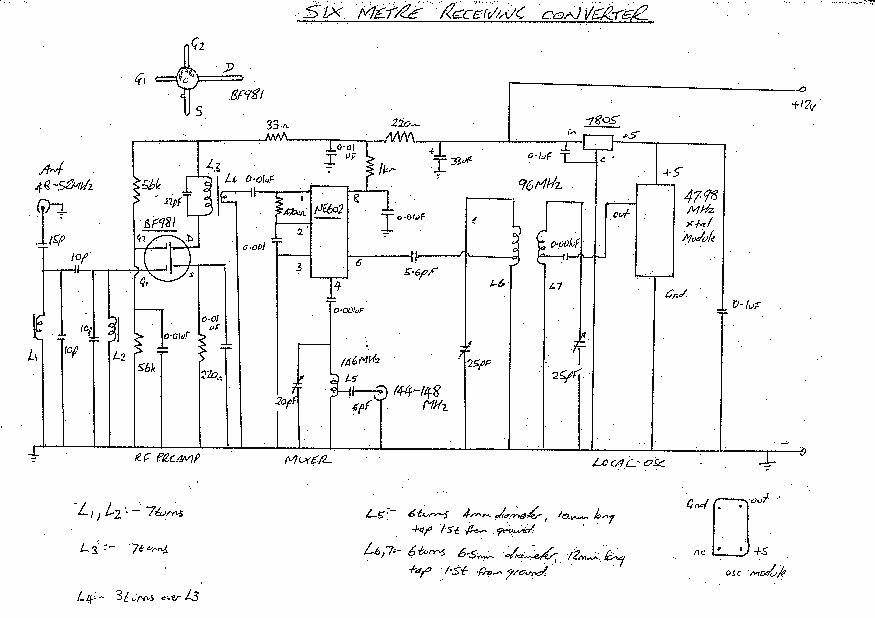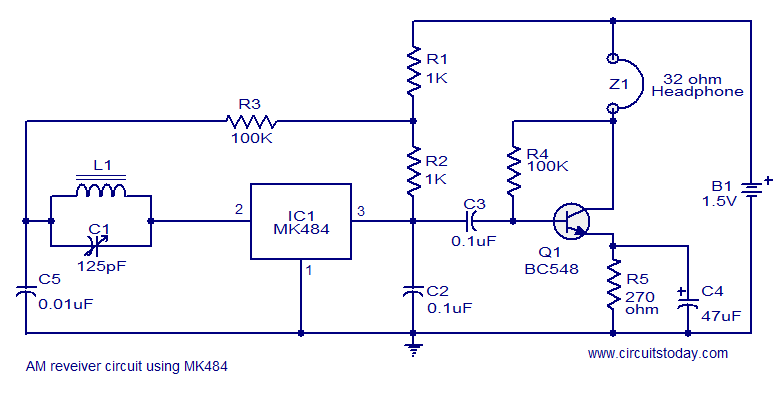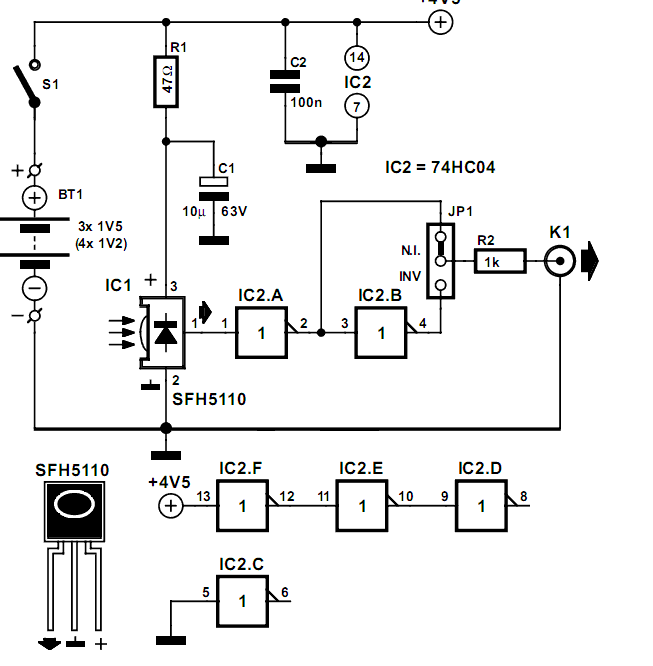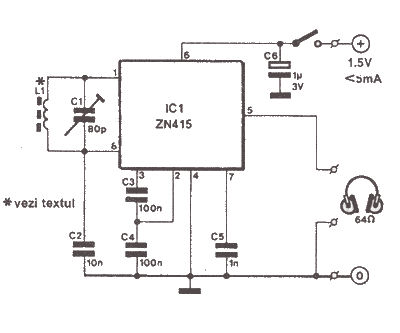
fm receiver basics
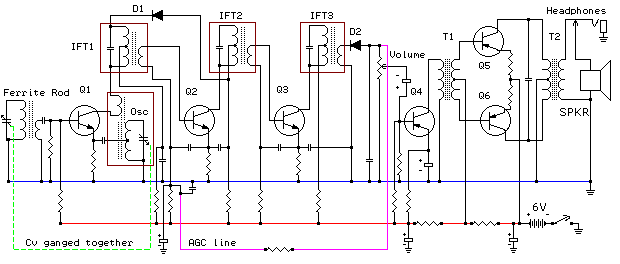
FM receivers are primarily of the superheterodyne type. To understand FM radio receivers, it is essential to consider the key differences between AM and FM signals. While it may seem obvious, these differences are significant. An AM receiver depends on the original carrier signal, which has been amplitude modulated. This indicates that the original amplitude (strength) varies at an audio rate. An unmodulated carrier signal appears constant in amplitude when viewed on an oscilloscope. The carrier signal, common to both AM and FM signals, repeats each cycle from point (a) to point (b) at a frequency of 810,000 times per second, corresponding to 810 kHz in the AM radio band. The audio modulating signal, depicted in red, alters the strength of the carrier signal, represented in green. In the receiver circuit, a diode detector can convert the varying amplitude envelope back into the original audio signal for amplification, although this process can introduce some distortion. This distortion led to the search for improved transmission methods. Additionally, it was found that noise—whether man-made (QRM) or natural (QRN)—is amplitude-related. Noise impulses, illustrated by the blue lines, can exceed the amplitude envelope of the received signal significantly. Consequently, frequency modulation (FM) was developed, where instead of varying the amplitude of the carrier signal, the carrier frequency is varied in accordance with the audio frequency.
FM receivers are predominantly designed using the superheterodyne architecture, which enhances selectivity and sensitivity. This design involves mixing the incoming FM signal with a locally generated frequency to produce an intermediate frequency (IF) that can be more easily processed. The superheterodyne receiver typically consists of several key stages: RF amplification, frequency conversion, IF amplification, and demodulation.
The RF stage amplifies the incoming FM signal while filtering out unwanted frequencies. The frequency conversion stage employs a mixer, where the FM signal is combined with a local oscillator signal. The output of this stage is the IF signal, which is at a fixed frequency, allowing for consistent amplification and filtering. The IF stage further amplifies the signal and removes any remaining unwanted frequencies.
The demodulation stage is critical in FM receivers. It utilizes a discriminator or a phase-locked loop (PLL) to convert the frequency variations of the FM signal back into the original audio signal. The discriminator detects changes in frequency and translates them into corresponding amplitude changes, effectively reconstructing the audio signal for amplification and playback.
Overall, FM receivers provide improved sound quality and resistance to noise compared to AM receivers, making them a popular choice for radio broadcasting. The evolution from amplitude modulation to frequency modulation has significantly enhanced the listening experience by minimizing the impact of noise and distortion.Mainly f. m. receivers are of the superhetrodyne variety. Before we go into any depth about f. m. radio receivers let`s consider the principal differences between a. m. and f. m. signals. At first glance it might seem I am merely stating the blinding obvious but the differences are indeed quite profound. An a. m. receiver relies upon the original carrier signal (station frequency) having been amplitude modulated. This means the original amplitude (strength) varies at an audio rate. Looking at figure 1 we can see an unmodulated carrier signal as it might be seen on an oscilloscope. as you can see the amplitude of the carrier signal is unvarying, it remains constant in height looking from the top of the figure to the bottom of the figure. This carrier is common to both a. m. and f. m. signals. Perhaps the a. m. carrier signal repeats each cycle from point (a) to point (b) - "blue" - in figure 2 below at the rate of 810, 000 times a second, this represents a frequency of 810 Khz and would be in the a.
m. radio band. Here you will notice that the audio modulating signal which is depicted in red has varied the strength of the carrier signal which is depicted green for purposes of this illustration. You will note my skills as a graphic artist leave much to be desired (hint: anyone able to contribute oscillograghs in.
jpg or. gif formats ) but you should be able to see the carrier sine wave envelope is being varied in strength by the red audio signal. In the receiver circuit a diode detector can convert that envelope above back into the original audio signal for later amplification although some distortion does result.
It was to an extent this distortion property that people sought a better means of transmission. More important it was discovered that noise (either man made QRM or natural noise QRN) was amplitude in its properties. I have depicted two blue lines in the diagram above, these represent noise impulses caused perhaps by automobile ignition, nearby fluorescent lighting, your computer or atmospheric noise such as a distant storm.
Note the blue lines extend beyond the amplitude envelope, they could be many times the magnitude of the received signal. For these reasons frequency modulation evolved. Instead of varying the amplitude of the carrier signal, which remains constant, we vary the carrier frequency more or less by the audio frequency.
🔗 External reference
FM receivers are predominantly designed using the superheterodyne architecture, which enhances selectivity and sensitivity. This design involves mixing the incoming FM signal with a locally generated frequency to produce an intermediate frequency (IF) that can be more easily processed. The superheterodyne receiver typically consists of several key stages: RF amplification, frequency conversion, IF amplification, and demodulation.
The RF stage amplifies the incoming FM signal while filtering out unwanted frequencies. The frequency conversion stage employs a mixer, where the FM signal is combined with a local oscillator signal. The output of this stage is the IF signal, which is at a fixed frequency, allowing for consistent amplification and filtering. The IF stage further amplifies the signal and removes any remaining unwanted frequencies.
The demodulation stage is critical in FM receivers. It utilizes a discriminator or a phase-locked loop (PLL) to convert the frequency variations of the FM signal back into the original audio signal. The discriminator detects changes in frequency and translates them into corresponding amplitude changes, effectively reconstructing the audio signal for amplification and playback.
Overall, FM receivers provide improved sound quality and resistance to noise compared to AM receivers, making them a popular choice for radio broadcasting. The evolution from amplitude modulation to frequency modulation has significantly enhanced the listening experience by minimizing the impact of noise and distortion.Mainly f. m. receivers are of the superhetrodyne variety. Before we go into any depth about f. m. radio receivers let`s consider the principal differences between a. m. and f. m. signals. At first glance it might seem I am merely stating the blinding obvious but the differences are indeed quite profound. An a. m. receiver relies upon the original carrier signal (station frequency) having been amplitude modulated. This means the original amplitude (strength) varies at an audio rate. Looking at figure 1 we can see an unmodulated carrier signal as it might be seen on an oscilloscope. as you can see the amplitude of the carrier signal is unvarying, it remains constant in height looking from the top of the figure to the bottom of the figure. This carrier is common to both a. m. and f. m. signals. Perhaps the a. m. carrier signal repeats each cycle from point (a) to point (b) - "blue" - in figure 2 below at the rate of 810, 000 times a second, this represents a frequency of 810 Khz and would be in the a.
m. radio band. Here you will notice that the audio modulating signal which is depicted in red has varied the strength of the carrier signal which is depicted green for purposes of this illustration. You will note my skills as a graphic artist leave much to be desired (hint: anyone able to contribute oscillograghs in.
jpg or. gif formats ) but you should be able to see the carrier sine wave envelope is being varied in strength by the red audio signal. In the receiver circuit a diode detector can convert that envelope above back into the original audio signal for later amplification although some distortion does result.
It was to an extent this distortion property that people sought a better means of transmission. More important it was discovered that noise (either man made QRM or natural noise QRN) was amplitude in its properties. I have depicted two blue lines in the diagram above, these represent noise impulses caused perhaps by automobile ignition, nearby fluorescent lighting, your computer or atmospheric noise such as a distant storm.
Note the blue lines extend beyond the amplitude envelope, they could be many times the magnitude of the received signal. For these reasons frequency modulation evolved. Instead of varying the amplitude of the carrier signal, which remains constant, we vary the carrier frequency more or less by the audio frequency.
🔗 External reference
Warning: include(partials/cookie-banner.php): Failed to open stream: Permission denied in /var/www/html/nextgr/view-circuit.php on line 713
Warning: include(): Failed opening 'partials/cookie-banner.php' for inclusion (include_path='.:/usr/share/php') in /var/www/html/nextgr/view-circuit.php on line 713
